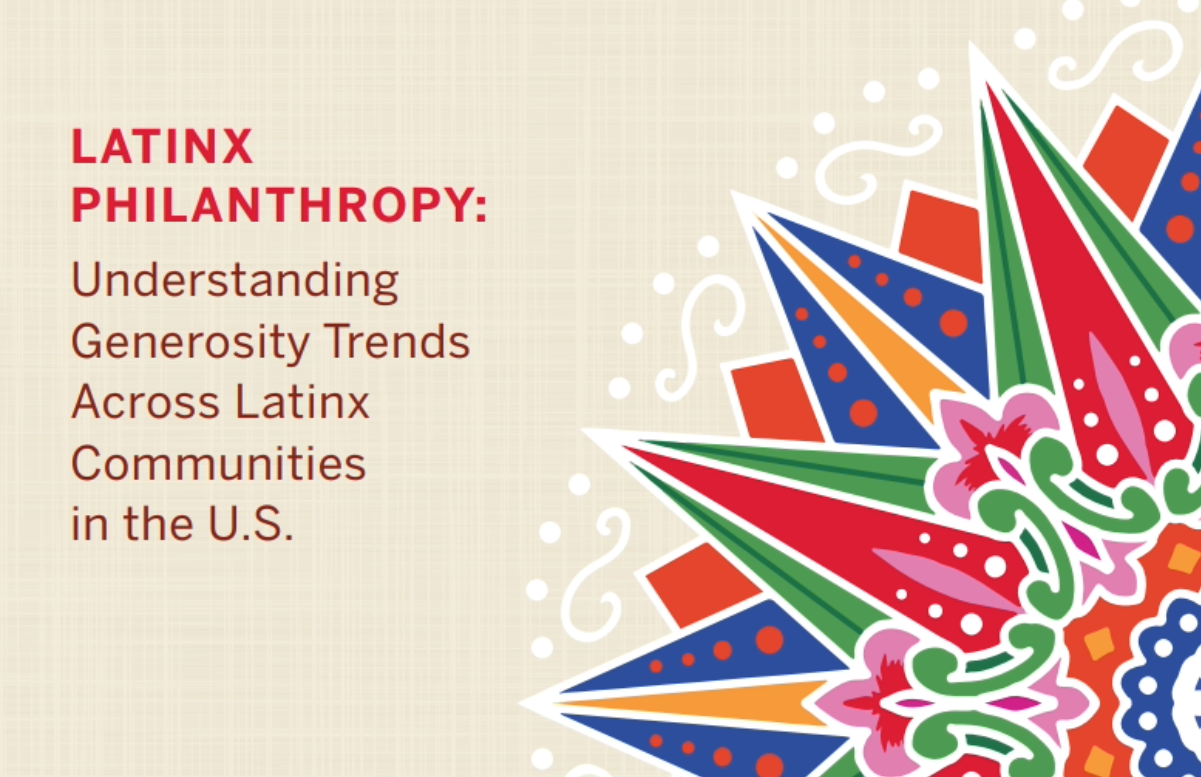Data suggest Latinx funders are pulling back from funding nonprofits. In 2000, 67% of U.S.-born Latinx households made donations, a figure that tumbled to 51% as of 2018. Among Latinx immigrant households, 56% made donations in 2000 while only 40% did so in 2018.
Additionally, the number of Latinx households overall that made donations to specific charitable institutions dropped from 44% in 2000 to 26% in 2018, according to Latinx Philanthropy: Understanding Generosity Trends Across Latinx Communities in the U.S., a new report from the Indiana University Lilly Family School of Philanthropy and Hispanics in Philanthropy, an Oakland, California-based nonprofit that seeks to expand Latinx leadership and influence in the philanthropic community.
The number of funders might be shrinking, but dollars contributed have more or less held steady, or at least matched the declines seen in broader populations, indicating there is a shrinking pool of funders offering higher concentrations of conventional philanthropic funding. The report focused on philanthropic participation and did not discuss dollars given in detail.
Nonprofits shouldn’t be quick to write off the community based on those topline figures, however. Wealth and the potential for contributions within the Latinx community is often held within family-owned businesses, which are harder for philanthropy propensity modelers and fundraising professionals to capture. On the funding side, members of Latinx households are more likely to make use of informal giving such as private transfers to family members or local networks.
Between 2000 and 2018, this form of largesse consistently made up around 12% or so of donations among U.S.-born Latinx individuals and between 15% and 25% of immigrant donations. And these types of donations are more difficult to track and factor into Latinx individuals’ value as funders. Additionally, Latinx philanthropists are also likely to make donations of food, clothing or other hard-to-track contributions.
The community also uses other, harder-to-track funding practices. “[Informal] giving, such as a circle, mutual aid or direct cash transfers are not as well understood,” Hispanics in Philanthropy Deputy Vice President of Philanthropic Practice Hilda Vega told The NonProfit Times. “There’s a different narrative about them. That’s one of the key pieces that needs a body of information about the ways that [Latinx funders] can contribute to a shifting role of philanthropy in the U.S.”
Fundraiser resistance might also contribute to the reason why high-net worth Latinx funders are underrepresented, in terms of contributions to traditional outlets. For nearly 40% of this population, philanthropy is a multigenerational endeavor, compared with less than 20% of non-Latinx funders. Nurturing relationships with multiple family stakeholders may seem daunting to development professionals, who prefer to focus on single targets when trying to meet annual goals.
“A variable that really stands out for Latinx families, especially with the high-net-worth population, is the role of family networks,” Lilly Family School Associate Dean for Research and International Programs Una Osili told The NonProfit Times. “We saw that in focus groups as well – that making decisions involves family members. Not just immediate family, but extended family members as well.” It is not uncommon for three generations of families, sometimes in disparate locations, to be involved in major donations. “The networks really matter,” Osili added.
Nurturing relationships with multiple generations of a family would seem to be a lot of work, especially when compared to handholding a single individual. But Osili noted that such relationships, once established, have a multiplier effect: fundraisers gain access to several hubs of potential contributions as families grow.
Reliance on extended family for significant decisions is also reflected in a general decrease in interpersonal trust among Latinx households. In 1972, 46% of Latinx individuals said most people could be trusted. By 2008, that figure had plunged to 12% before rebounding to 16% in 2018. Fundraising professionals, even if they represent blue-chip nonprofits, would still fall into that dubious category of untrustworthiness.
The lack of trust in institutions and the reliance on personal networks comes at a time when the Latinx population’s potential for donations has increased. The report does not quantify wealth among the community in great details, but it does note that the percentage of college-educated Latinx people, which is often an indicator of potential or realized wealth, increased from 25% in 2000 to 33% in 2018.
Funding priorities for this population have tended to emphasize religious congregations, which rank atop the list of recipients. These organizations are followed, in order, by those that address food, shelter and basic necessities needs, healthcare and medical research and education concerns. But these priorities are shifting, reflecting a general secularization of the U.S. population: through 2010, religious congregations reliably received around 30% or more of contributions. That percentage has steadily dropped since then, falling to below 20% in 2018, although still ahead of the 13% of food, shelter and basic necessities.
Recent immigrants are most likely responsible for the relative continued strength of religious institutions. “Newer migrants continue to have a very deep relationship with a church,” Vega said. “Or, when they arrive here in the U.S., the church is one of a small group of organizations available and offering services to help people learn to integrate and acclimate and become part of the community.”
A full copy of the report is available here.
*****
Editor’s Note: Amendments have been made to paragraphs two and five to make points more clear.










